Etude

Artificial intelligence (AI) in all its forms—robotics, machine learning, natural language processing and generation—is captivating finance departments. No wonder that adoption of robotic process automation (RPA) and machine learning is expected to double over the next two years, according to a new Bain & Company survey, in collaboration with Research Now, of 501 finance executives and professionals in the US, UK and Germany (see Figure 1).
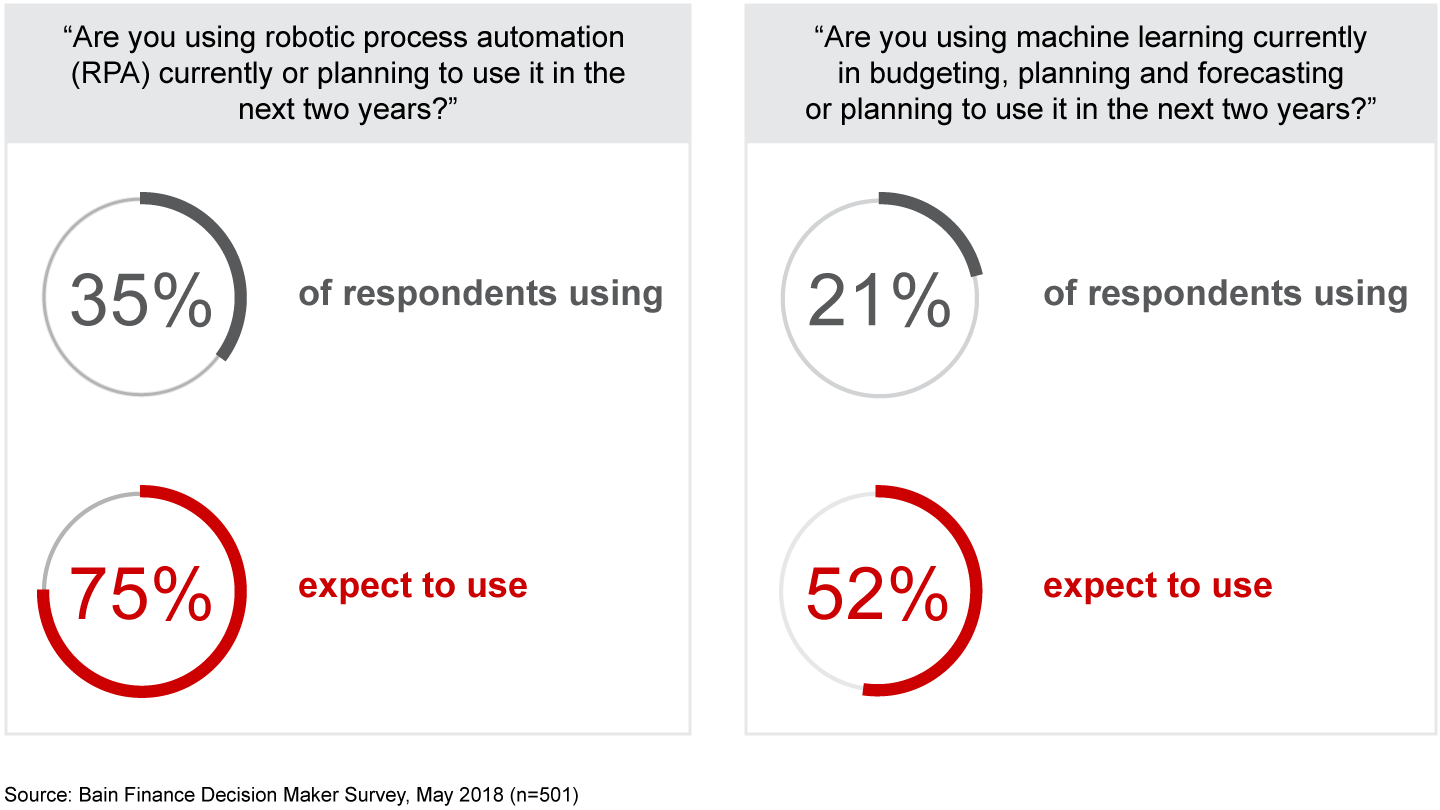

RPA has gained the most momentum up to this point. For example, FedEx automates tax, payroll, credit card reconciliations, treasury and other finance processes with RPA in its global shared services organization. Fossil Group uses RPA to automate the monthly financial close process. Allianz automatically reconciles cash pool accounts across three systems through robotics. Mastercard uses RPA in daily cash reconciliation for accounts payable and accounts receivable, order-to-collect, settlement cleaning, quality control and card expense management. Some companies have even named their RPA bots as they integrate into the daily rhythm of the finance department.
Government agencies have joined the trend as well. HM Revenue & Customs in the UK transformed internal tax processing through scanning, robotics and workflow with more than 200 unattended robots and 15,000 attended robots processing more than 10 million transactions through robotics annually.
Kurt Grichel, a partner with Bain's Corporate Support practice, examines how finance departments can make the most of their digital toolkits to reach full potential.
Machine learning and natural language processing and generation are taking both analytics and automation to new levels. In 2016, Citigroup used machine learning to help it pass the US Federal Reserve’s stress test, which it failed earlier. Danone applies the technology in deduction management to improve the efficiency and effectiveness of its order-to-cash process. USAA has invested in natural language generation (NLG) to automate the creation of commentary on product-line performance, acquisition trends and transactions for its product dashboards.
The rapid adoption of AI in finance continues a decades-long trend of technology transforming finance. Widespread use of optical character recognition (OCR) dates to the 1970s, spreadsheets to the 1980s, and financial planning systems and electronic invoicing to the 1990s. Each of these technologies improved productivity in finance departments. Today, our survey finds, 76% of finance executives agree that digital will fundamentally change finance, and they are investing accordingly, with 23% of finance departments planning to increase IT budgets by more than 10% over each of the next two years.
But here’s the rub: The accumulation of technologies has created substantial complexity, leaving few finance departments able to wring the full potential value from the technology they own. Lack of digital tools is not the main sticking point. Rather, finance professionals lament unintegrated tools, too many tools and a poor user experience (see Figure 2).


For example, in accounts payable, fewer than one-third of respondent companies pay more than 60% of supplier invoices electronically, and only 6% process those supplier invoices with no manual intervention (see Figure 3). That’s far from an automated process, despite the long period that electronic invoicing has been available.


Based on cost savings already achieved from RPA and machine learning, many companies hope these technologies will help them address the inefficiencies and exceptions that arise from existing technology (see Figure 4). Yet while finance departments are rapidly investing in an array of new technologies, many have still not yet fully adopted more mature technologies:
- In accounts payable, our survey finds that 55% of respondents are not using basic technologies such as OCR tools or online invoice approvals, yet 66% of these laggards plan to invest in RPA.
- In accounts receivable, 43% are not using basic technologies such as e-invoicing and customer self-service portals, yet 63% of these laggards plan to invest in RPA.
- In internal audit, 34% are not using basic electronic work papers or tools for monitoring remediation and follow-up, and here again, 65% plan to invest in RPA (see Figure 5)
The upshot: Too many finance departments may be rushing into hot new technologies without taking parallel steps to capture value from their existing store of technologies. Absent proper integration, companies that adopt more tools risk adding further complexity and unwittingly creating a new set of problems.
Fortunately, the survey suggests how finance departments can use the full toolkit more effectively, apart from keeping pace with digital trends.
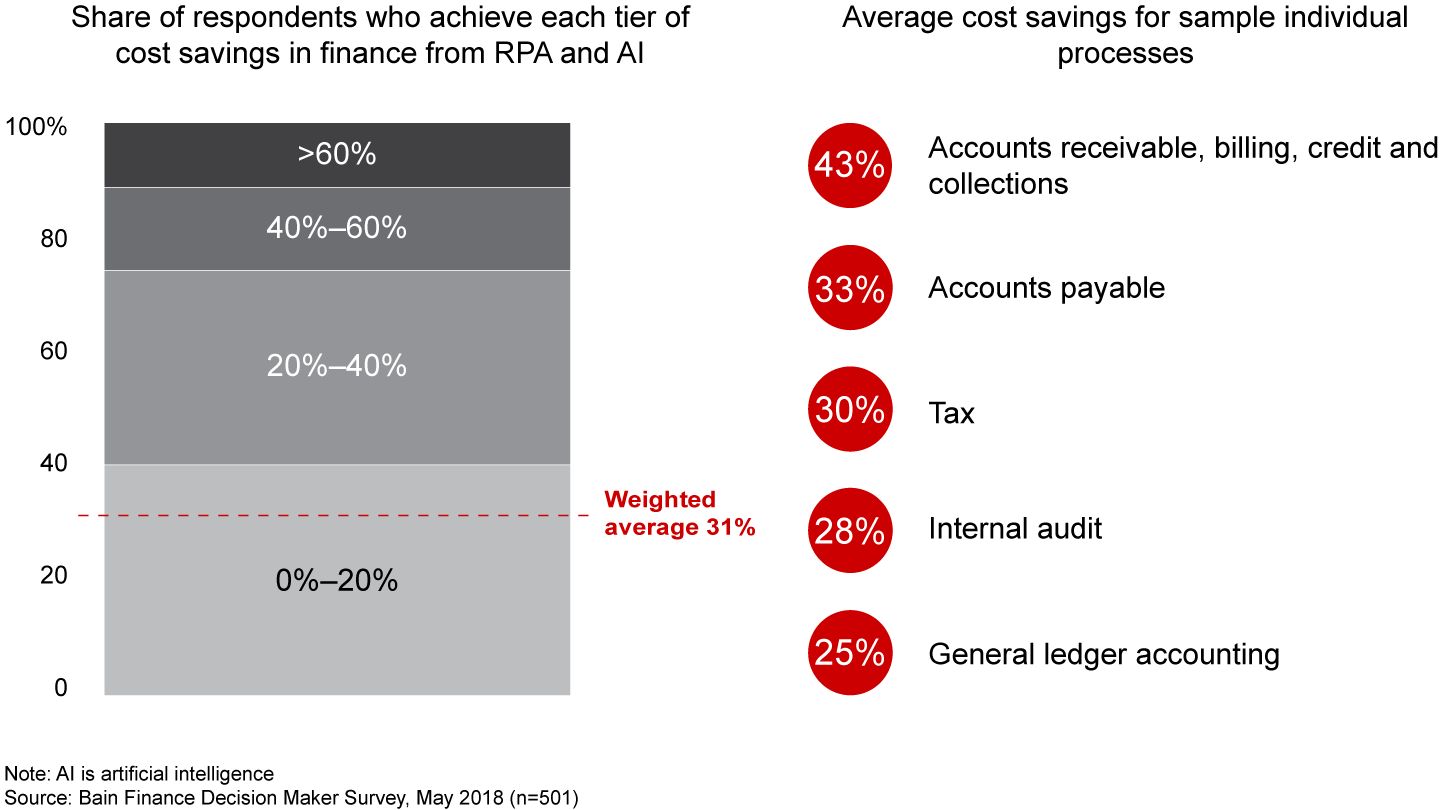

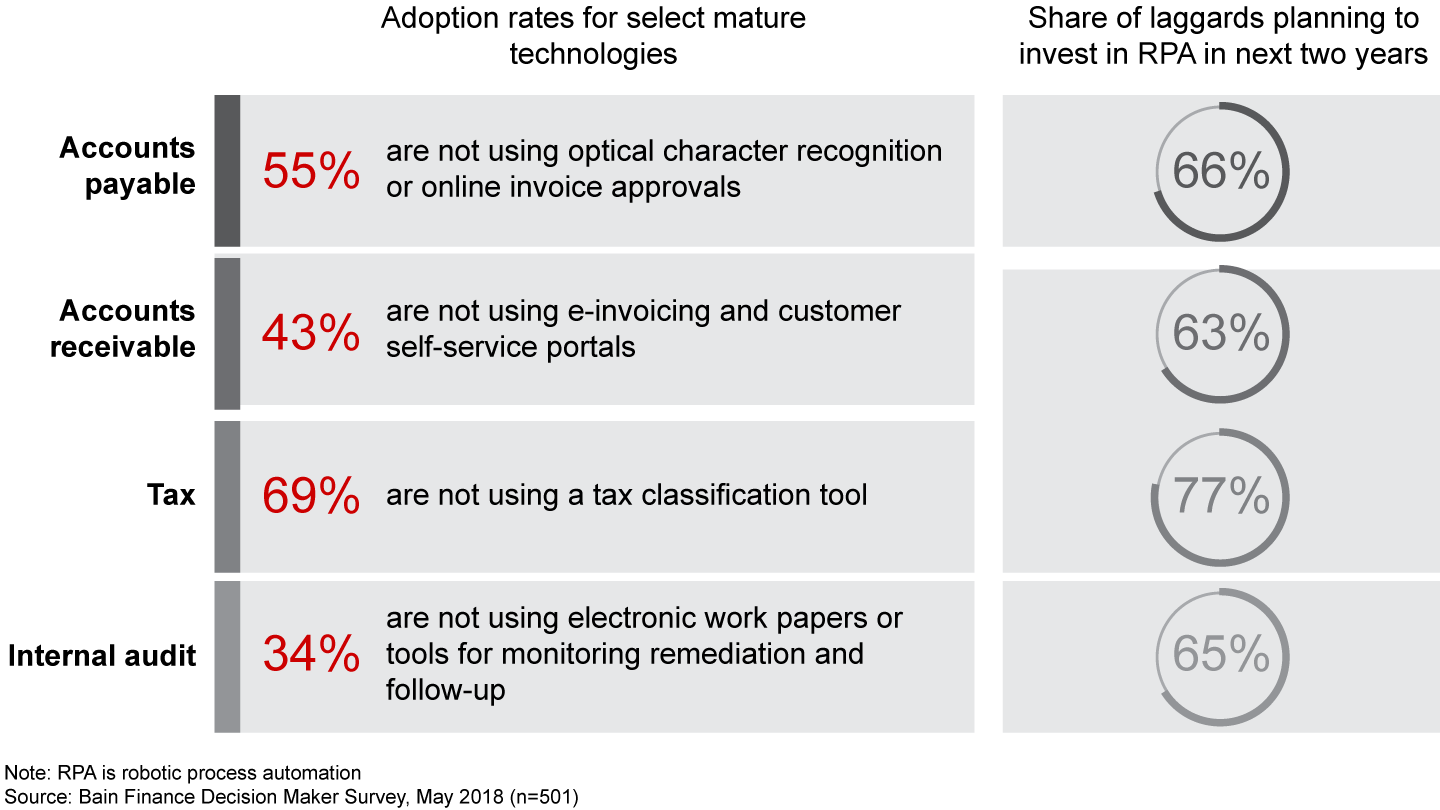

Don’t neglect the tried and true. The extent to which many finance departments have overlooked established technologies is startling. Among large companies surveyed, only 53% have a tool to automate journal entry creation and validation for accounting, and only 31% have a tool to automate revenue recognition. Fewer than half use tools in tax document management, and in customer billing, only 37% have a self-service portal.
While RPA or machine learning might help here, other root causes typically come into play, such as poor data governance or a poor user experience. Companies will want to address these problems in order to generate sustainable improvements in finance processes.
Look beyond cost. Cost savings is still the top reason cited by respondents overall for adopting digital tools, but speed, freeing up staff time, financial controls and other reasons follow close behind (see Figure 6). In some industries, such as telecommunications, media and technology, and business services, at least one of those reasons is more important than cost savings. And in some finance processes, such as budgeting and forecasting, financial close and accounts receivable, speed has become the top reason for adoption.
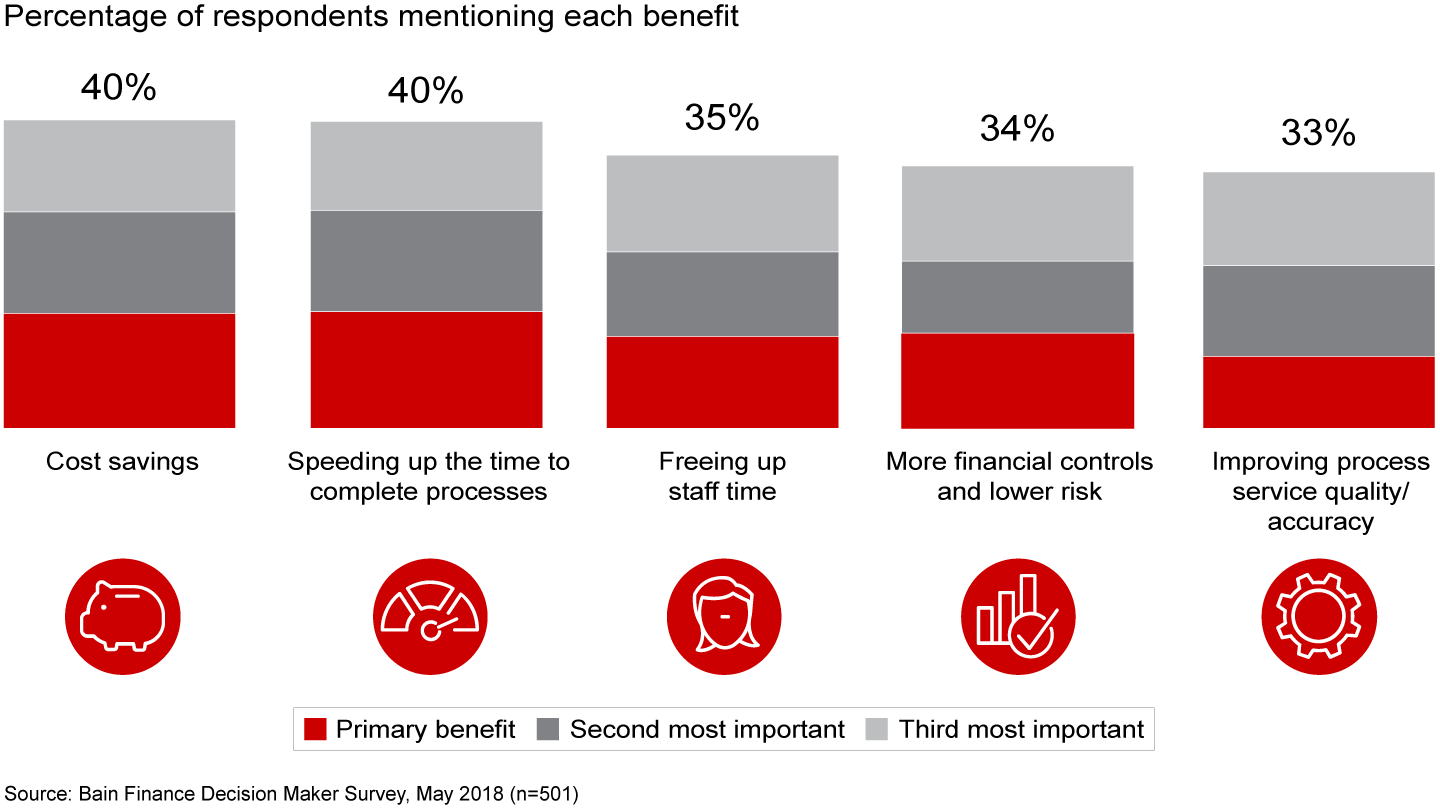

Microsoft’s Enterprise Partner Group, for instance, uses machine learning in forecasting. With more than 98% accuracy on average worldwide, this forecast method has achieved higher accuracy than the internally developed manual forecast. One consumer goods company uses machine learning to improve demand forecasting that previously was handled by 70 human planners. That technology has improved sales growth, reduced time to market by 30%, increased productivity in planning by up to 80% and reduced inventory levels by 1% to 3%.
While RPA and machine learning have delivered cost savings, some companies have taken longer than anticipated to design and put in production RPA bots, and the savings achieved sometimes fall short relative to the initial business case. The pattern of cloud computing is instructive here, as the earliest adopters focused more on speed, flexibility and scalability than on cost.
Define the destination and test and learn. More often than not, finance departments are overconfident about their digital maturity and ability to execute their digital goals (see Figure 7). CFOs, for instance, express more optimism than do finance professionals on the front line about their department’s position in the industry, the quality of technology they use and sufficiency of funding to execute digital goals (see Figure 8).
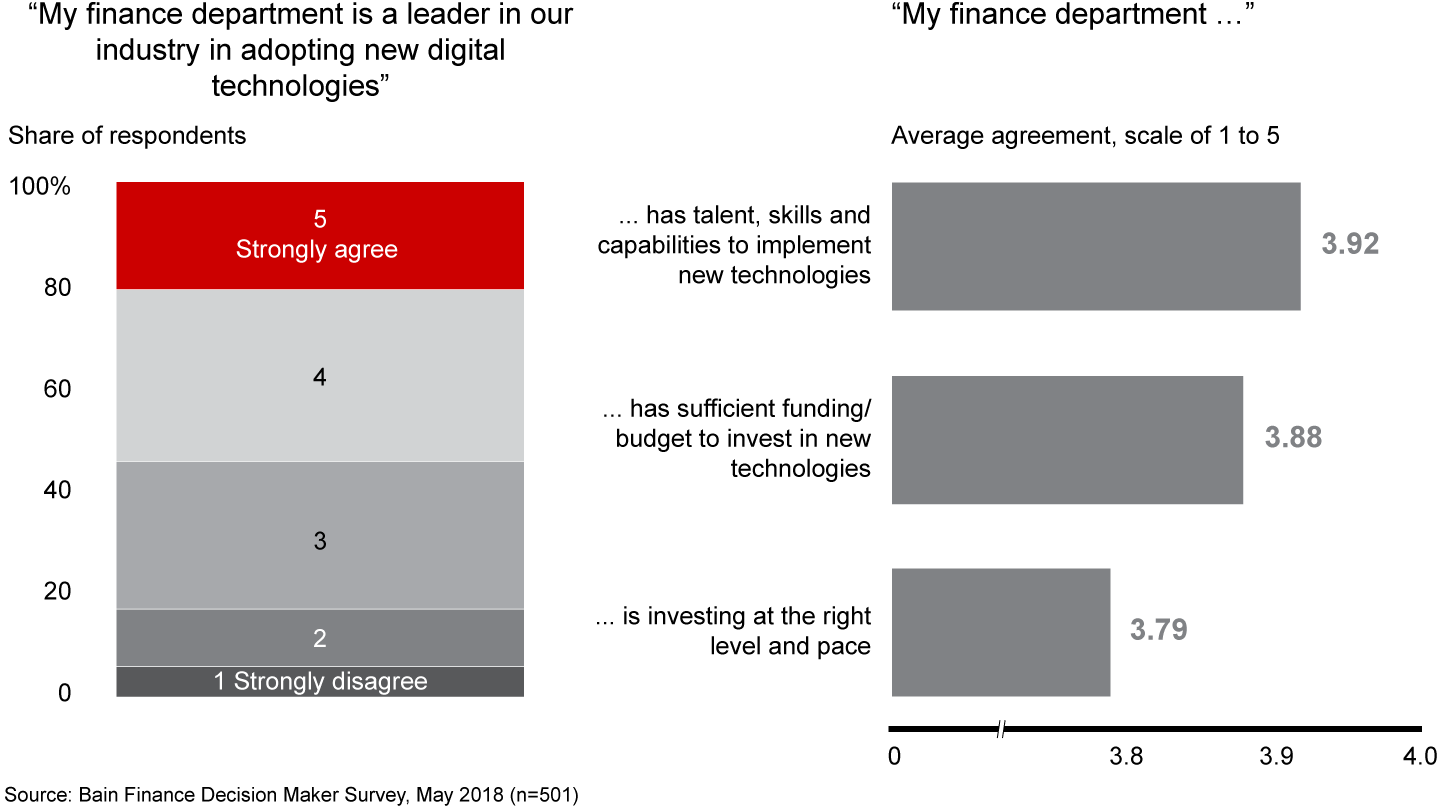

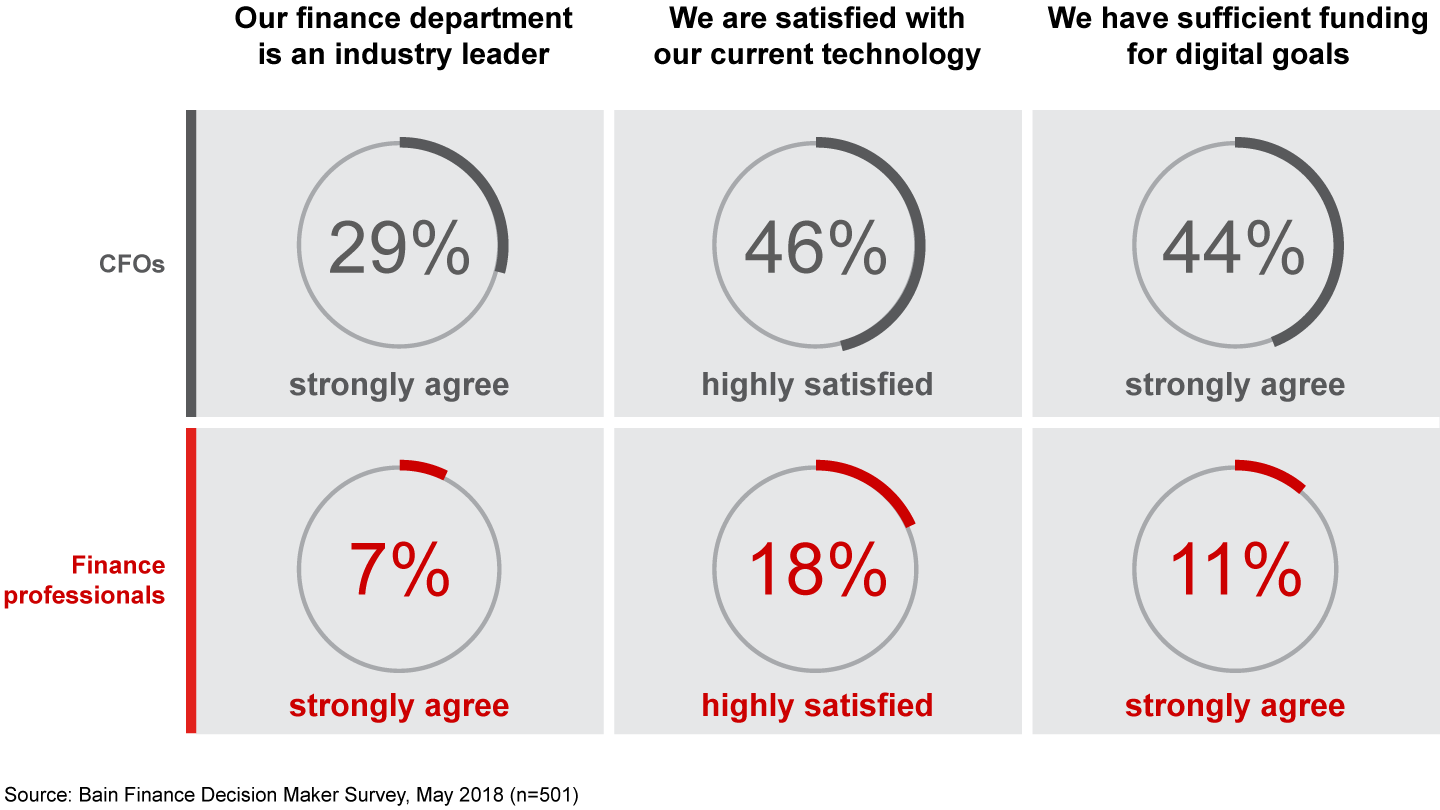

In light of fairly widespread overconfidence, senior finance leaders should objectively assess their digital starting point, with input from internal customers and frontline users. This will allow them to create a clear and compelling digital vision and multiyear blueprint, with a portfolio of digital bets.
Once a company starts to deploy unproven technologies, it should be willing to test and learn, rather than go all in immediately. A test-and-learn approach mitigates the risk of overreliance on one technology that eventually falls short of expectations.
Take a cloud-first stance. Just five years ago, cloud computing was embraced by only the earliest adopters. Today, 74% of companies use cloud-based, software-as-a-service (SaaS) applications in at least one finance process (see Figure 9). The cloud acts as a forcing function to standardize business processes since SaaS applications cannot be customized to the degree of traditional on-premise applications.
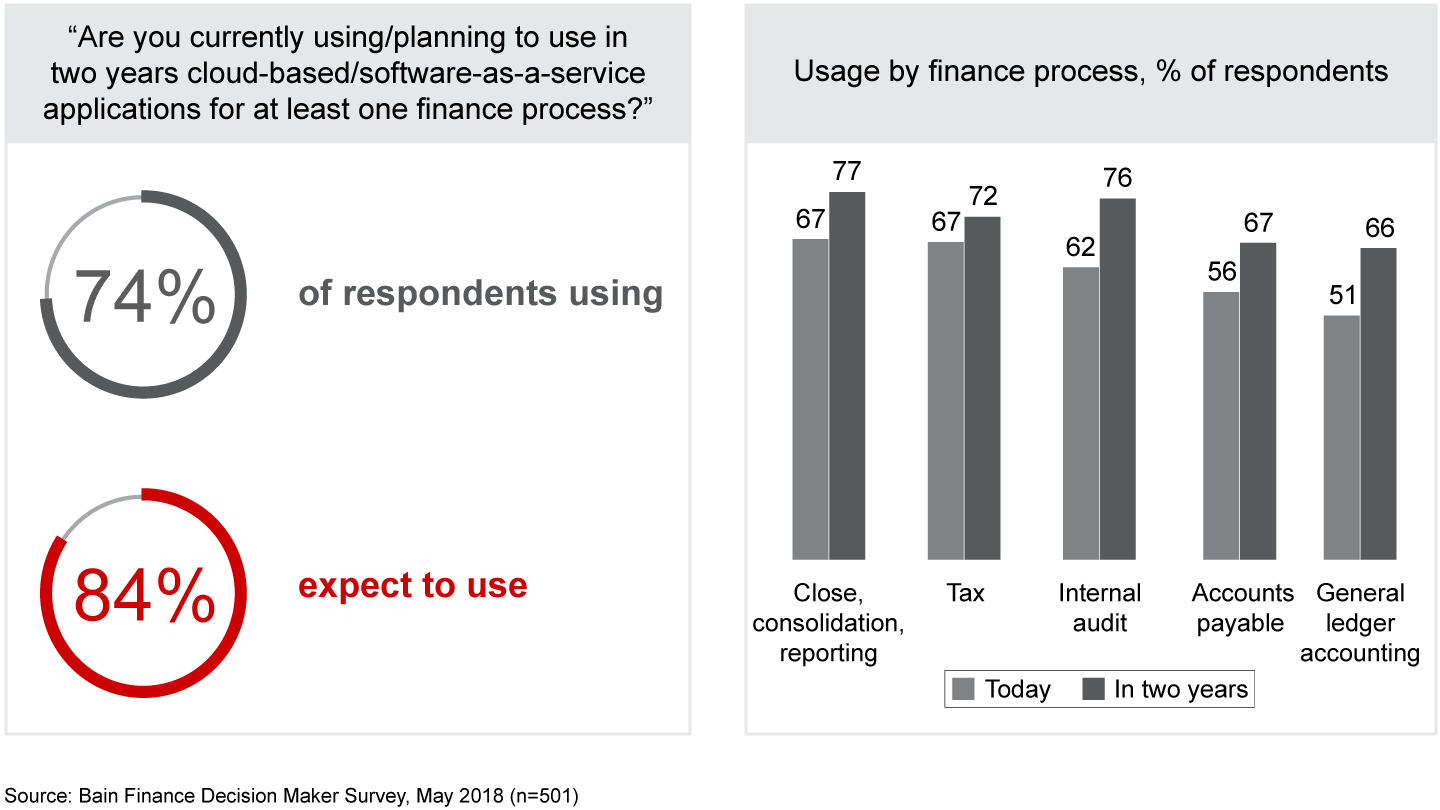

The notion of deploying the general ledger on the cloud was unthinkable just a few years ago, especially for large multinationals. Today, however, many large enterprises deploy the general ledger on the cloud in some parts of their environment. For example, Qualcomm uses the cloud to support 11 of its smaller country operations in procure-to-pay-to-general-ledger, where a traditional on-premise approach in these smaller countries did not have a sufficient return on investment. By using the cloud, Qualcomm cut costs in half and carried out the initiative much faster.
Fix and simplify processes, data and systems. RPA and machine learning have a broad range of valuable use cases. RPA can reduce manual exceptions to enable straight-through processing, pull data from multiple systems to create an integrated view, and accelerate the reconciliation of accounts and transactions.
Often, though, it would be better if companies could retire some of their RPA bots as they simplify and standardize underlying business processes, data and systems. Rather than having a bot pull data from a large number of different customer invoice types, for example, a company at some point will want to move to common invoice formats and away from paper invoices.
Similarly, machine learning can review large amounts of inbound requests across a range of email inboxes and route requests to the right teams. In billing and collections, machine learning can identify deductions with a high probability of being valid and link backup documents with deductions. However, a machine-learning algorithm works only as well as the quality of the data. Without addressing data governance and quality, algorithms have limited value.
While artificial intelligence can provide new capabilities that traditional technologies cannot, such as automating the creation of commentary for management reports through NLG, these new technologies do not eliminate the need to address the root causes of inefficiencies. In some cases, such as with machine learning, the technology might not even function unless some of these root causes are addressed.
Digital tools are essential for finance to raise its value to the business. They have become powerful enough to help finance to identify value opportunities, not just monitor trends in the numbers, and to allow finance to proactively manage risks, not just maintain controls. Successfully making that transition as a true business partner will hinge on more effective use of existing technologies, while testing the latest tools to identify the handful that will make a difference, then integrating them into the larger family.
Michael Heric is a partner with Bain & Company’s Performance Improvement practice, and leads the firm’s support functions work globally. He is based in New York.